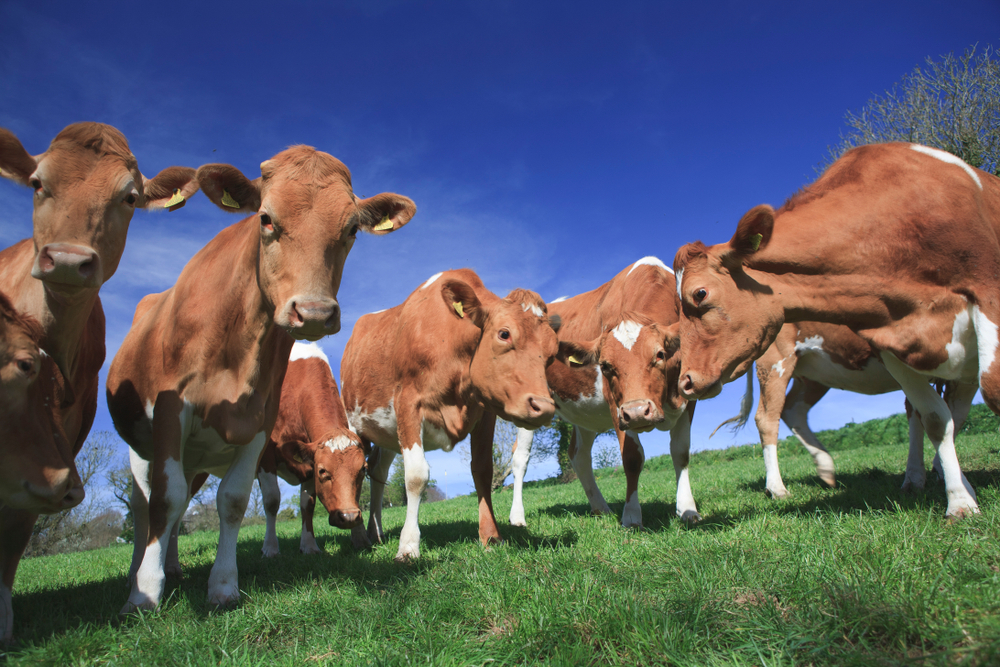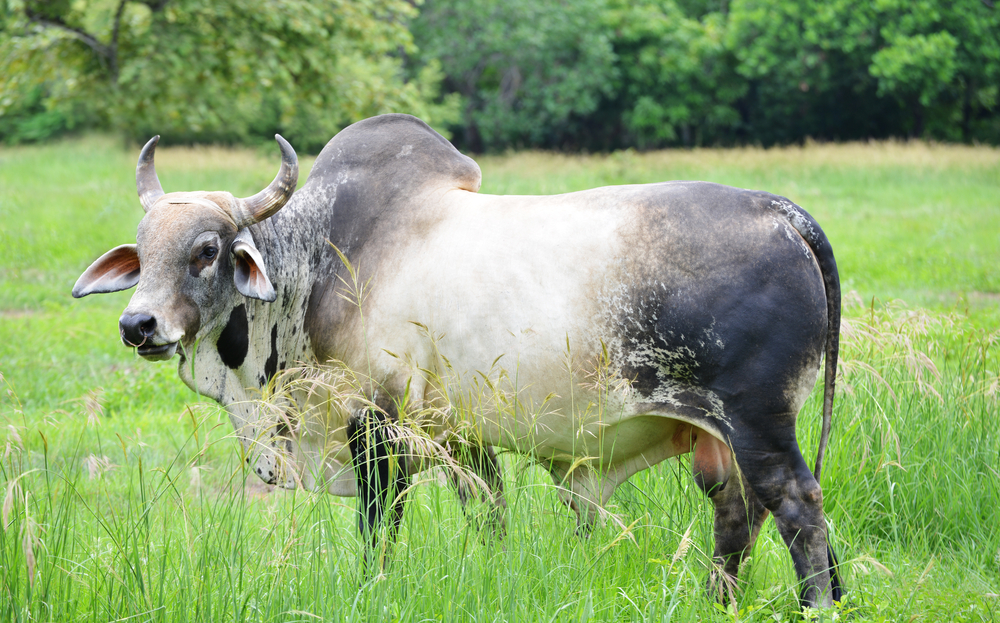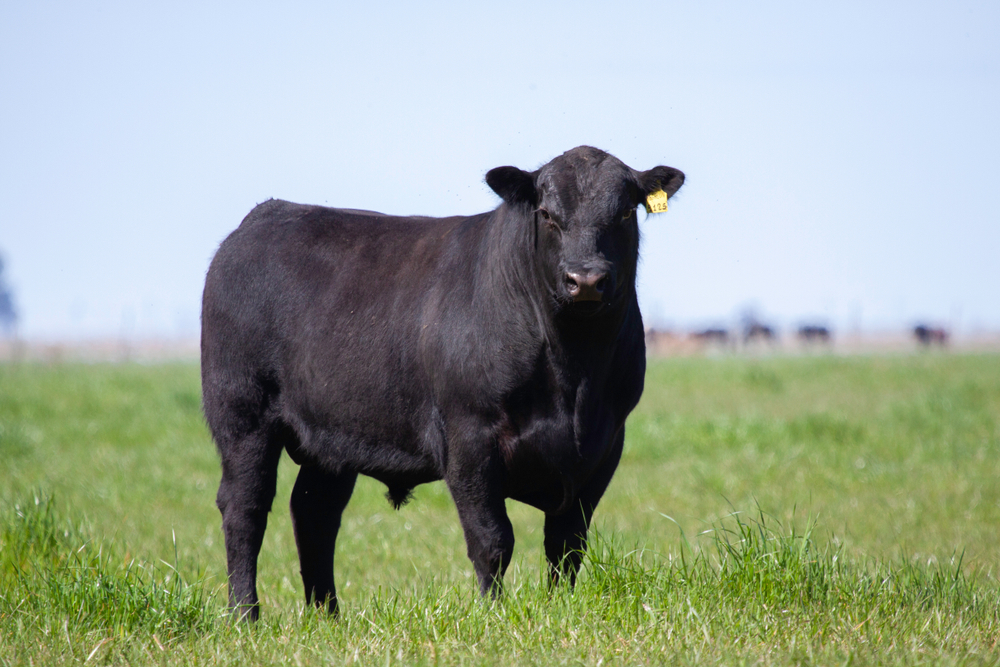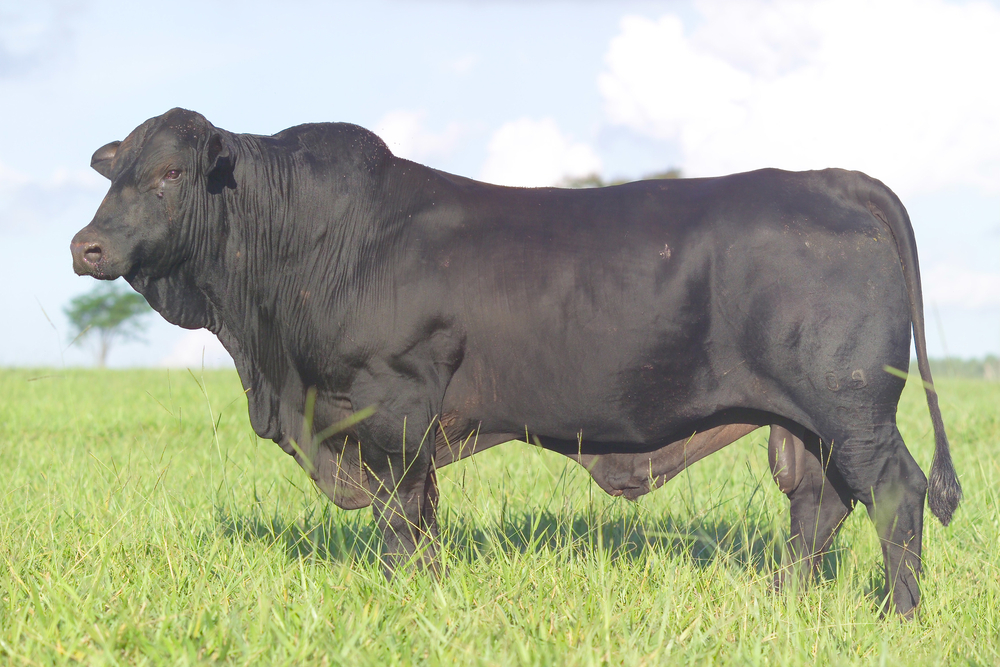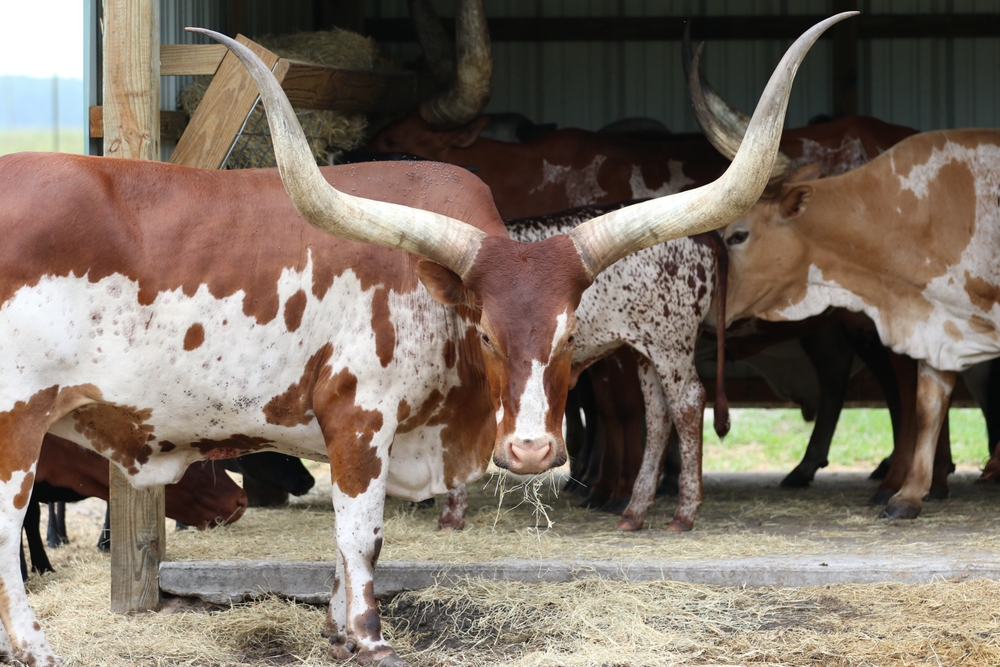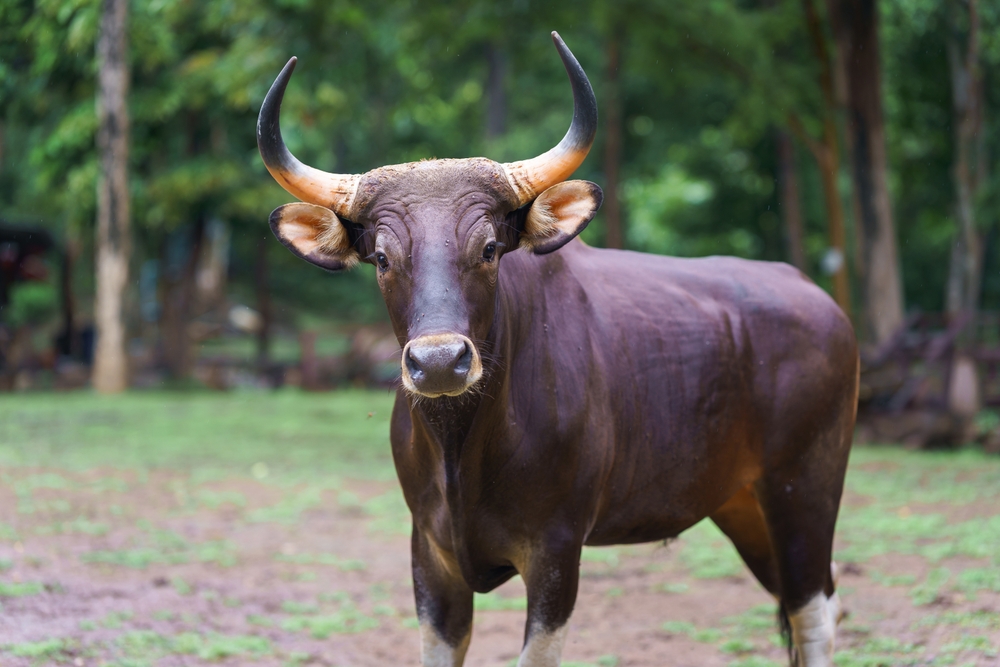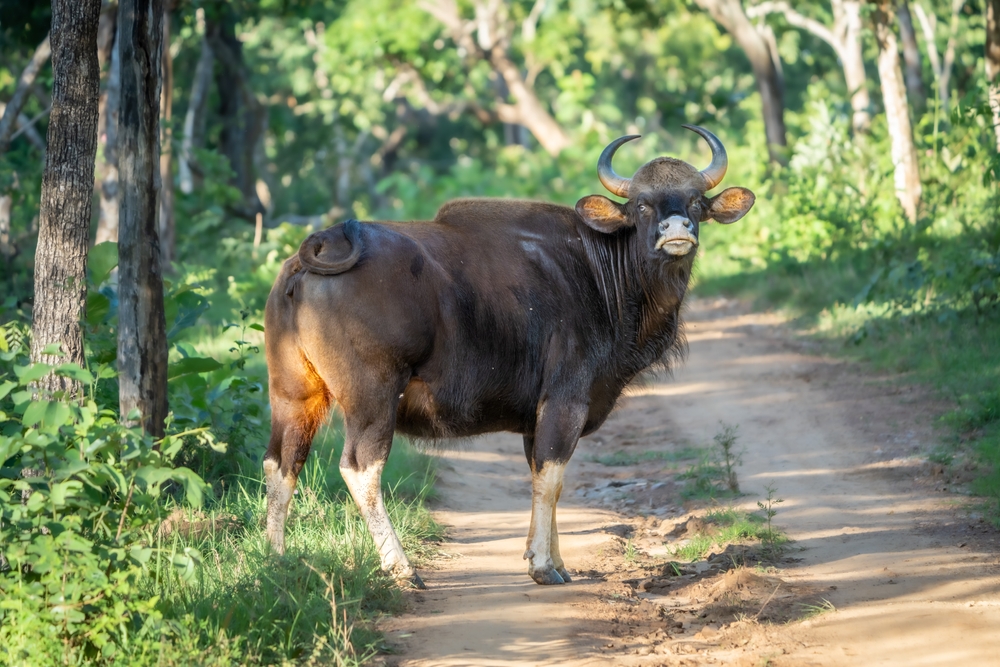The Guernsey is a breed of domestic dairy cattle (Bos taurus), most closely related to other Channel Island breeds such as the Jersey and Alderney (now extinct). It also shares ancestry with Norman and French cattle brought to the Isle of Guernsey centuries ago.
About
The Guernsey (Bos taurus) is a dairy cattle breed celebrated for its rich, golden-hued milk and belongs to the family Bovidae, which also includes buffalo, bison, antelope, and goats. Originating from the Channel Island of Guernsey between France and England, the breed was developed over centuries from a mix of French Norman and Breton cattle, selected for exceptional milk quality and gentle temperament.
Guernsey cows are medium-sized, typically weighing 450–550 kg (1,000–1,200 lbs), and are known for their reddish-brown and white coat patterns. They have a refined, angular build characteristic of dairy breeds, with a well-developed udder designed for sustained milk production. Their docile nature and adaptability make them a favorite among small farmers and large dairies alike.
The Guernsey is renowned for producing milk with a naturally high butterfat content (around 5%) and protein levels (around 3.5%), along with a deep golden color caused by high beta-carotene levels. This nutrient not only gives the milk a distinctive hue but also adds to its nutritional value. The breed’s milk is prized for butter and specialty dairy products, often marketed as premium or artisanal.
Guernsey cows are efficient grazers, thriving on pasture-based systems while maintaining good milk yield on relatively modest feed compared to larger dairy breeds like the Holstein. They are adaptable to a range of climates and are often noted for their calving ease and fertility.
Today, while their numbers are smaller than more commercially dominant breeds, Guernseys are valued in niche dairy markets and by farmers seeking a balance of production, efficiency, and milk quality. Conservation efforts aim to maintain this heritage breed’s unique genetics in the face of agricultural homogenization.
Physical Characteristics
Guernsey cattle are a heritage dairy breed prized for their rich, high-butterfat milk and distinctive golden coloring:
-
Coat: Short, sleek hair in shades of reddish-gold to fawn, with clearly defined white markings on the face, legs, belly, and tail switch.
-
Head: Medium-sized head with a straight profile; most have horns, though many are dehorned in commercial operations. Horns are light in color with dark tips and curve slightly upward.
-
Udder: Well-developed, capacious udder with strong suspensory ligaments, producing milk with notably high butterfat and beta-carotene content.
-
Body: Moderately framed, angular build suited for efficient milk production rather than heavy muscling. Deep-chested with well-sprung ribs and a strong topline.
-
Skin: Lightly pigmented, often with a yellowish tone due to beta-carotene in the milk.
-
Tail: Long and slim with a white tuft at the end.
Size:
-
Length (Body): Approximately 7 to 8 ft (2.1 to 2.4 m) from head to rump.
-
Shoulder Height: Around 4.3 to 4.8 ft (1.3 to 1.45 m).
Weight:
-
Adult Female (Cow): Typically 1,000 to 1,400 lbs (455 to 635 kg).
-
Adult Male (Bull): Usually 1,600 to 2,000 lbs (725 to 910 kg).
Guernseys are known for their calm temperament, efficiency on moderate feed, and ability to produce milk with a golden hue, making them a valued dairy breed for both heritage farming and specialty milk markets.
Reproduction
Guernsey cattle have a well-regarded reproductive record, known for ease of calving and strong maternal instincts:
-
Mating and Breeding Season:
-
Guernseys are non-seasonal breeders, able to reproduce year-round.
-
Breeding is often managed through artificial insemination (AI) to preserve breed quality and desirable milk traits.
-
-
Gestation:
-
The gestation period lasts about 283 days (approximately 9 months), similar to most dairy breeds.
-
-
Birth and Calving:
-
Cows typically give birth to a single calf; twins are rare.
-
Calving ease is a hallmark of the breed, with fewer birthing complications compared to some larger-framed dairy cattle.
-
-
Calf Characteristics at Birth:
-
Calves generally weigh 60 to 90 lbs (27 to 41 kg).
-
They are vigorous and able to stand and nurse within hours after birth.
-
-
Maternal Care:
-
Guernsey cows are attentive mothers with good milk supply for their calves.
-
In commercial dairying, calves are often separated soon after birth for milk collection, but in small-scale farms, calves may remain with their mothers longer.
-
-
Maturity and Breeding Readiness:
-
Heifers usually reach breeding age at 15 to 18 months, with a target first calving age of around 2 years.
-
Bulls reach breeding capability at about 15 months, though most herds use AI instead of natural service.
-
Guernsey cattle’s combination of fertility, calving ease, and strong maternal behavior makes them a reliable and productive choice for dairy operations, especially those prioritizing both milk quality and herd longevity.
Lifespan
Lifespan
-
In Commercial Dairy Operations:
Guernsey cows typically live 7 to 9 years, with many remaining in production longer than high-output breeds like Holstein due to their moderate milk yield and fewer health issues. -
In Small-Scale or Pasture-Based Systems:
With less intensive management and lower metabolic stress, Guernseys often live 12 to 15 years, producing milk for 8 to 10 of those years. -
In Sanctuary or Ideal Care Settings:
Without production pressures, Guernseys can reach 18 to 20 years, though this is rare outside non-commercial environments.
Threats to Longevity:
-
Reproductive Issues: Infertility, retained placenta, or prolonged calving intervals can lead to early culling.
-
Udder Health: While generally healthy, mastitis can still impact lifespan if not managed.
-
Hoof & Leg Problems: Lameness from wet conditions, poor housing, or hard surfaces can limit mobility and reduce productive years.
-
Metabolic Disorders: Conditions such as ketosis or milk fever, though less common in Guernseys than in some high-yield breeds, can still affect herd longevity.
The Guernsey’s balanced production, calm temperament, and general hardiness often translate into a longer and more productive life compared to many intensive-production dairy breeds.
Eating Habits
Guernsey cattle are efficient grazers with dietary needs that balance milk production with overall health:
-
Primary Diet:
-
Prefer pasture grasses such as ryegrass, fescue, clover, and alfalfa when grazing is available.
-
Consume hay, silage, and haylage during non-grazing seasons.
-
Often receive supplemental grains (corn, oats, barley) to meet the energy demands of milk production.
-
-
Nutritional Balance:
-
Require a well-balanced diet rich in protein, fiber, calcium, and phosphorus to maintain udder health and milk quality.
-
Beta-carotene-rich feeds (such as alfalfa and certain legumes) enhance the golden color of their milk.
-
-
Water Needs:
-
High water intake is essential—producing cows may drink 20 to 35 gallons (75 to 132 liters) of water daily, depending on climate and yield.
-
-
Feeding Behavior:
-
Graze for several hours in the morning and evening, resting and ruminating during the heat of the day.
-
In dairy barns, often fed a total mixed ration (TMR) to ensure consistent nutrition and steady milk output.
-
The Guernsey’s efficient metabolism allows it to produce rich, high-butterfat milk on moderate feed intake, making it ideal for pasture-based and sustainable dairy operations.
Uniqueness
The Guernsey (Bos taurus) is a distinctive dairy breed with several characteristics that set it apart:
-
Golden Milk: Produces milk naturally rich in beta-carotene, giving it a golden-yellow hue. This milk is also high in butterfat (around 5%) and protein (around 3.5%), ideal for butter, cheese, and specialty dairy products.
-
Feed Efficiency: Known for producing high-quality milk on 30% less feed than many larger dairy breeds, making them cost-effective and environmentally friendly.
-
Calm Temperament: Gentle and easy to handle, which reduces stress in the herd and benefits both animal welfare and milk production.
-
Adaptability: Performs well in a variety of climates and thrives in both intensive dairy systems and pasture-based operations.
-
Heritage Status: Originated from the Isle of Guernsey in the English Channel, developed from Norman and French cattle breeds in the 10th century, and retains much of its traditional breed character.
-
Longevity: Generally has a longer productive life than many high-yield dairy breeds due to balanced milk production and fewer metabolic issues.
-
Aesthetic Appeal: Attractive reddish-gold and white coloring makes Guernseys popular for both dairy farming and agricultural shows.
The Guernsey’s combination of beauty, efficiency, and milk quality has earned it a loyal following among dairy farmers who value rich, flavorful milk over sheer volume.
Be the First to Share Photos of This Species.
FAQ’s
1. What is the closest species to the Guernsey?
2. How does the Guernsey compare to other cattle breeds?
Guernseys are smaller, more feed-efficient, and longer-lived than many high-yield breeds like the Holstein. While they produce less milk in total volume, their milk is richer in butterfat, protein, and beta-carotene, making it highly prized for premium dairy products. They are also calmer and easier to handle than many dairy breeds.
3. What national parks provide the best chances to see a Guernsey?
As a domesticated breed, Guernseys are found on farms rather than in the wild, but they may be seen grazing near rural or coastal protected areas, especially in places with dairy heritage:
-
Guernsey’s rural landscapes (Channel Islands, UK) – the breed’s original home.
-
New Forest National Park area (England) – surrounding farms sometimes keep traditional dairy breeds.
-
Acadia National Park region (Maine, USA) – nearby small farms maintain Guernseys for artisanal dairy production.



































































